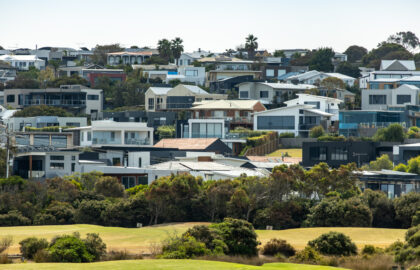
Look at the new properties being developed in Sydney and you will see many feature ‘smart’ elements and apply the latest technology to reduce energy use and support electric vehicles.
When you’re selling an existing place, adding similar features will attract attention from buyers.
What is a smart home?
A smart/automated home has features that can be controlled remotely via your phone or computer, or even with voice control. The term to know when it comes to a smart home is IoT connectivity.
IoT connectivity means that you can use one central system to operate items in your home that are connected to the internet. For example, you can set the oven to preheat for 20 minutes before you get home. You can use voice control to play music throughout the house. You can even pre-program shutters or blinds to open and close at set times of day.
Smart homes even have doors that can be locked or unlocked with a PIN or swipe card instead of a key, and they have cameras that will notify you via your phone when someone is at the door.
Smart features that sell for more
Another feature being introduced to modern homes in the 2020s is a charging station for electric vehicles (EVs). EVs are becoming increasingly popular, and being able to charge a car at home with a proper station is now a selling point.
The other area to explore is solar panels and batteries. An investment in these will reduce a home’s ongoing electricity bill, which is another drawcard for buyers. However, you should speak with an agent about whether such an investment will help you sell your property faster and for more.
What does it cost to turn your home into a smart home?
Choice Magazine explains you can spend as little as $100 to add a feature like turning lamps on with your phone.
The amount you spend on a home automation upgrade will depend on how seamless you want your connections to be and how many devices you want connected. If you’re planning to sell, think about automating lights, security, temperature control, and locks/doors as these are features you are less likely to take with you. The investment will start from a couple of thousand dollars and can go up to $15,000, depending on what you need. Speak to an electrician who specialises and ask for a quote.
Installing an EV charger
According to drive.com.au, the price of an EV wall charger unit ranges from around $500 to $2000. Installation costs aren’t included, so you will need to pay up to $1250 to an electrician who knows how to do the job.
The cost of the investment highlights the importance of knowing your target audience. If you’re in a suburb with a high number of EV drivers, putting a charger in could be a smart move for a faster sale. However, the endeavour won’t be worth it if it’s not a point of interest for buyers.
Your best source of advice is a real estate agent. They can explain if adding smart features and home automation before you sell is the right strategy to achieve a better outcome.
Talk to your local Professionals representative for information about the best way to prepare your home for sale.







